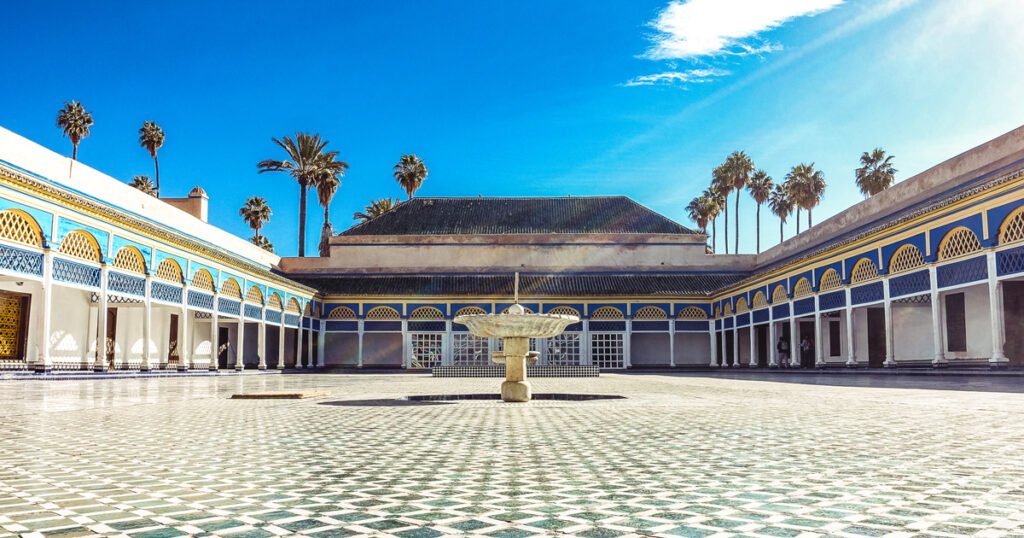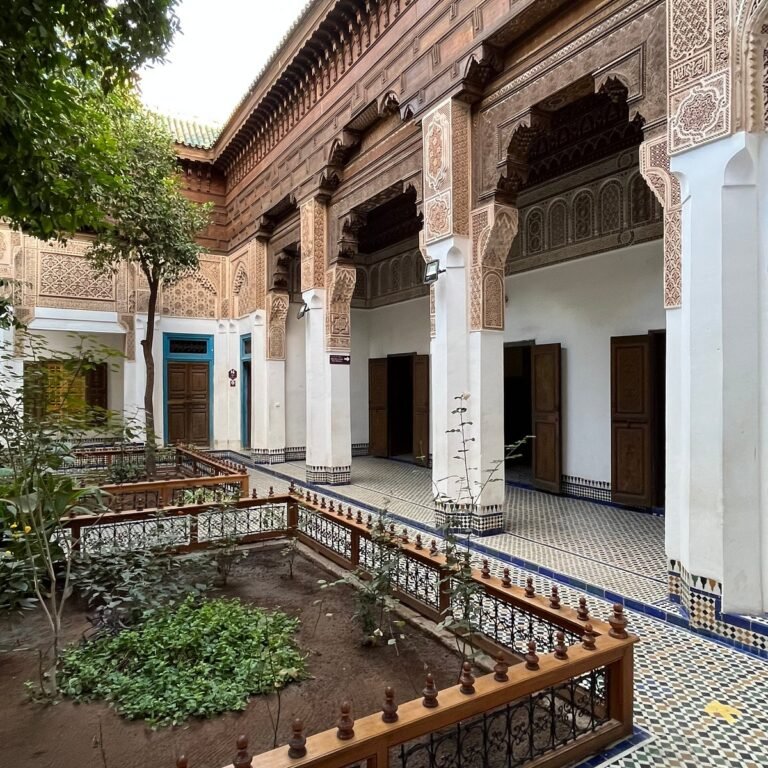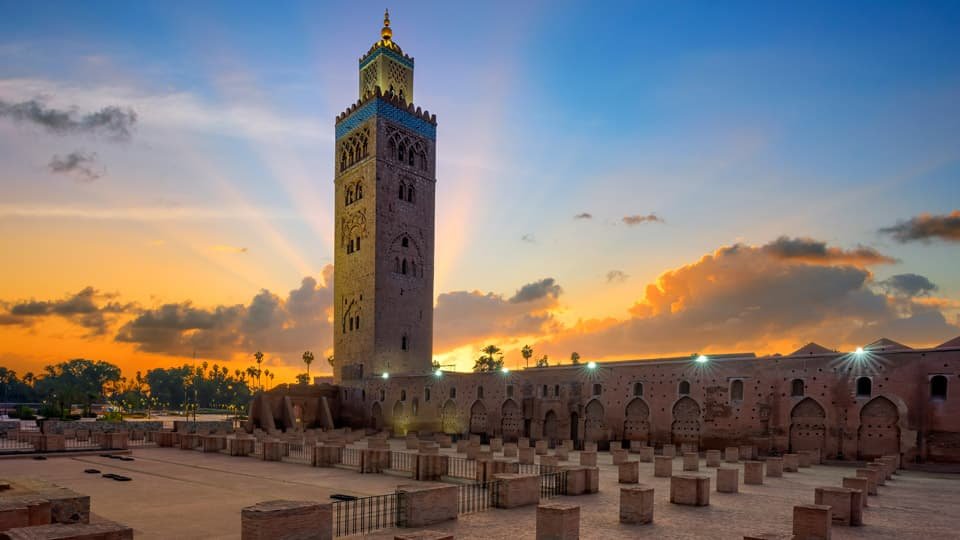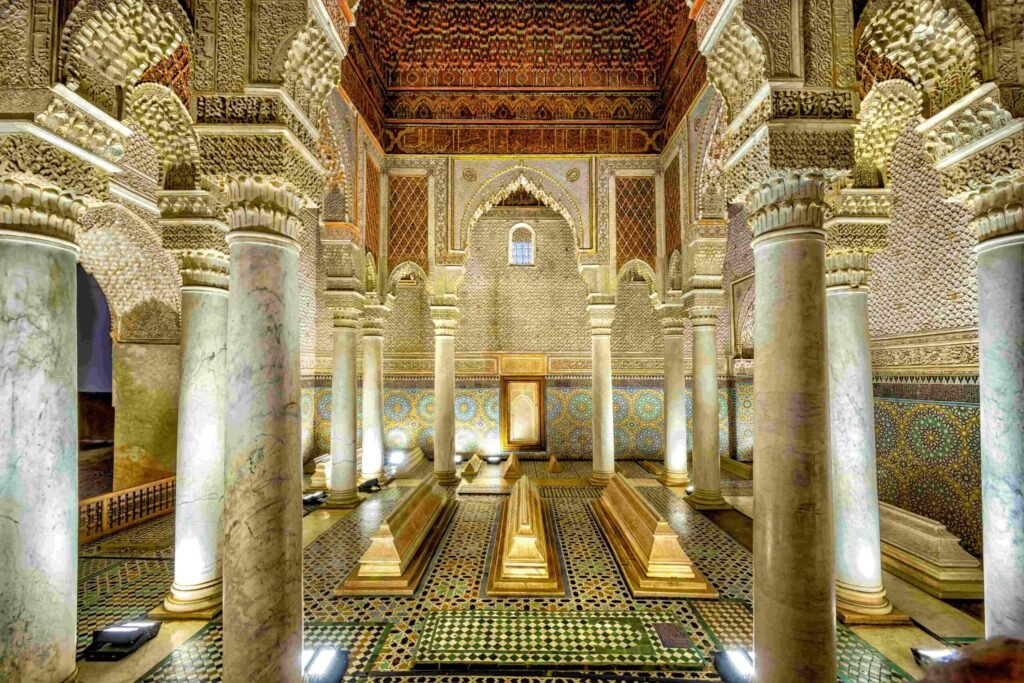Bahia Palace
- Travel Guide
- Marrakech Attractions
- Bahia Palce
Step Into the Splendor of Bahia Palace
Located in the heart of Marrakech, Bahia Palace is a marvel of 19th-century Moroccan architecture, embodying the grandeur and elegance of the period. Originally built as a residence for Si Moussa, the Grand Vizier of Sultan Hassan I, the palace’s name, “Bahia,” meaning “brilliance,” reflects its extraordinary beauty. Visitors to Bahia Palace are transported to a world of intricate craftsmanship, lush courtyards, and opulent interiors that highlight Morocco’s artistic heritage.

How to Get Tickets for Bahia Palace
Tickets for Bahia Palace can be purchased at the entrance, with affordable prices that make it accessible to all visitors. Since it is a popular attraction, visiting early in the day or later in the afternoon can help avoid the crowds.
- Ticket Price: Approximately 70 MAD for adults; children may be eligible for discounts.
- Opening Hours: Daily from 9 a.m. to 5 p.m., though hours may vary on holidays.
History of Bahia Palace
Bahia Palace was constructed in the late 1800s by Si Moussa, the Grand Vizier, and later expanded by his son, Ba Ahmed, who was also a powerful vizier. Each room and courtyard was designed with meticulous attention to detail, intended to showcase wealth and taste while reflecting Islamic and Moroccan architectural styles. The palace served as a private residence and place for receiving important visitors, symbolizing the wealth and power of the Moroccan royal court during that era.
Who Was Si Moussa?
Si Moussa was the Grand Vizier of Sultan Hassan I, known for his influence and vision. He initially commissioned the construction of Bahia Palace as a testament to his high status and refined taste. Later, his son Ba Ahmed took over and further enriched the palace’s design, adding more luxurious rooms and gardens. Together, they created one of Morocco’s architectural gems, a space that continues to inspire admiration to this day.
Architectural Highlights of Bahia Palace
Bahia Palace is celebrated for its stunning Moorish and Islamic architectural design. The palace boasts beautiful painted wood ceilings, intricately carved stucco, and exquisite zellige tilework that adorns every surface. Visitors can wander through peaceful courtyards filled with fragrant orange trees and lush gardens, enjoying the serene atmosphere. The vast complex includes multiple rooms and halls, each uniquely decorated to reflect traditional Moroccan artistry.

Practical Information for Visitors
Visitors to Bahia Palace should set aside at least an hour to fully appreciate its beauty. The open courtyards and elegant rooms offer plenty of opportunities for photography, especially with the stunning tilework and decorative features.
- Location: Rue Riad Zitoun el Jdid, Marrakech, Morocco
- Best Time to Visit: Early morning or late afternoon to avoid peak hours and enjoy quieter surroundings.
- Photography Tips: Capture the palace’s intricate tilework and architectural details for memorable photos.
An Emblem of Moroccan Grandeur
Bahia Palace stands as a tribute to Morocco’s artistic and cultural heritage. With its detailed craftsmanship, serene gardens, and historical significance, the palace offers visitors a unique glimpse into the opulent lifestyle of Marrakech’s elite in the 19th century. For anyone visiting Marrakech, Bahia Palace is a must-see destination, providing a rich experience of Morocco’s architectural splendor.
Practical Information
- Location: Rue Riad Zitoun el Jdid, Marrakech, Morocco
- Best Time to Visit: Early morning or late afternoon to avoid peak hours and enjoy quieter surroundings.
- Photography Tips: Capture the palace's intricate tilework and architectural details for memorable photos.





